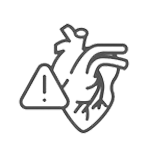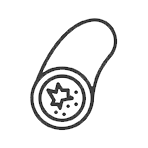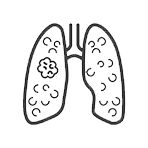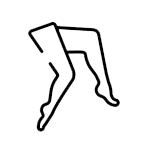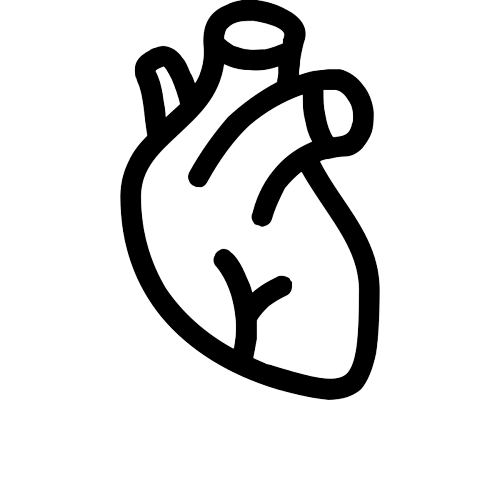Pulmonary Embolism
Q & A
What is pulmonary embolism?
Pulmonary embolism is when a blood clot suddenly blocks a major blood vessel (artery) in the lung. Most of the time, the clots are small and don’t kill people, but they can hurt the lungs. But if the clot is big enough to stop blood from getting to the lung, it can kill the person. Blood flow is slowed down by a blood clot, which can damage lung tissue. The blood clot might dissolve on its own. If it does happen, it might not be a big deal. But if you don’t get treatment, new clots can form and cause another PE. If pulmonary embolism is found right away and treated with anticoagulants, new blood clots might not form.
If a blood clot blocks the artery in the lung, blood flow may be completely stopped, causing sudden death. When treating a big, dangerous pulmonary embolism, doctors will think about taking strong steps.
Why does it happen?
Pulmonary embolism happens when an artery in the lungs gets blocked. A blood clot that forms in a deep vein in the leg and travels to the lungs is the most common cause of this kind of blockage. Other things, like tumours or air bubbles, can also block an artery. But these are not common.
Pulmonary embolism can sometimes be caused by things other than blood clots. Among them are:
- Small clumps of things that can make you sick.
- Fat. It can get into the bloodstream after some kinds of bone breaks, surgery, serious injuries, or severe burns.
- Trauma, surgery, or other medical procedures can cause air bubbles or other things to get into the blood.
- Tumors that are caused by cancer cells that grow quickly.
- Amniotic fluid.
What are the symptoms?
Most of the time, the symptoms of a pulmonary embolism come on all at once. If blood flow to one or both lungs is cut off, you might feel short of breath and have a fast heart rate. Sharp chest pain can be caused by inflammation of the pleura, which covers the lungs and chest wall. The most common signs of a pulmonary embolism are sudden shortness of breath, sudden, sharp chest pain that may get worse when you cough or take a deep breath, and a cough. If you cough, you might throw up blood or pink, foamy mucus.
Most people with pulmonary embolism will have:
Sudden shortness of breath.
Sharp, sudden pain in the chest that may get worse when you take deep breaths or cough.
If you cough, you might throw up blood or pink, foamy mucus.
There may be other signs of pulmonary embolism as well. These things are:
A fast heart rate.
- Wheezing.
- Fainting.
You should see a doctor right away if you have these symptoms, especially if they come on quickly and are very bad. Fast treatment could save your life or make it less likely that you will have problems in the future.
What puts you at greater risk?
There are many things that can make you more likely to get a pulmonary embolism. These things are:
- Being older than 40.
- Being overweight.
- Not taking the blood-thinning medicine as prescribed.
- Being sick for more than three days (such as in a hospital stay).
- Sitting for a long time, especially when travelling a long distance.
- Using hormones for birth control, being pregnant, or getting hormone therapy.
- Having had surgery or been hurt recently in the legs, hips, stomach, or brain.
- Neing sick in certain ways. These include cancer, a disease of the blood vessels, or an inherited problem with how blood clots.
- Smoking.
How is it diagnosed?
It can be hard to tell who has a pulmonary embolism. That’s because the signs are similar to those of other problems, like a heart attack. A doctor will do a physical exam. You might have tests to look for blood clots or rule out other possible causes of your symptoms. Blood tests and a CT angiogram may be part of the tests.
Tests and Exams
Pulmonary embolism can be hard to figure out. That’s because the symptoms are similar to those of many other problems, like a heart attack or pneumonia.
A doctor will look at your body and ask you about your health history and symptoms.
You might have tests to look for blood clots or rule out other causes of your symptoms. Tests may include:
An X-ray of the chest. This could rule out a heart that is too big or pneumonia.
Electrocardiogram (EKG) (EKG). This could help rule out a heart attack as a possibility.
There are blood tests, like the D-dimer. When someone has a pulmonary embolism, their D-dimer levels are often high.
A CT scan or a CT angiogram. With these tests, a pulmonary embolism or a blood clot that could cause it can be found.
A ventilation-perfusion lung scan. This test checks for blood flow problems in the lungs.
How do you treat a pulmonary embolism?
Most of the time, doctors use medicines called anticoagulants to treat pulmonary embolism. People often call them blood thinners, but they don’t actually make the blood thinner. They help stop blood clots from starting and from getting bigger. Most people take a medicine to thin their blood for a few months. People with a high risk of blood clots may have to take it for the rest of their lives.
Thrombolytics are drugs that can be used to break up blood clots if the symptoms are severe and life-threatening. These medicines can quickly break up blood clots, but they also make serious bleeding more likely. Surgery or a less invasive method can also be used to remove the clot (embolectomy).
Some people may have a filter put in the large vein (vena cava) that carries blood from the lower body to the heart. A vena cava filter might stop blood clots from getting to the lungs. If you can’t take an anticoagulant, this filter could be used instead.
Medicines
Anticoagulants are the medicines that are used to treat a pulmonary embolism. Blood thinners are another name for blood thinners. They can help stop blood from clotting and keep clots from getting bigger.
Most likely, you will need to take an anticoagulant for at least 3 months. You could take more time. If you have a high chance of getting another pulmonary embolism, you might have to take this medicine for the rest of your life.
Anticoagulants come in different forms. Talk to your doctor about what medicine you should take.
In the hospital, you might get an anticoagulant in the form of a pill, a shot, or an IV. You might give yourself shots for a few days after you get home. Long-term, you’ll probably have to take a pill.
Medicines that break up clots (called “thrombolytics”) aren’t often used to treat pulmonary embolism. They can break up a blood clot quickly. But they also make the chance of serious bleeding a lot higher.
Surgery
During surgery, a blood clot can be taken out to improve blood flow. Or, a catheter, which is a thin tube that is guided through a blood vessel, could be used to remove the clot in a less invasive way. An embolectomy is the name for this type of surgery or procedure.
Not many people have an embolectomy. But there are a few reasons why it might be done. These things are:
- You can’t get treatment that breaks up blood clots.
- You can’t wait for the medicine to work because the clot is so dangerous.
- You have had thrombolytic treatment, but it hasn’t worked well enough.
Prevention
If you’ve already had a pulmonary embolism, you’re more likely to get one again. If you take blood thinners, your risk goes down.
You can also lower your chance of getting a pulmonary embolism by not letting blood clots form in your legs. For example:
If your doctor gives you blood thinners, take them exactly as he or she tells you to.
Try not to sit for too long. Get up every hour or so and walk around, or flex your feet often.
Try to get up and out of bed often after being sick or having surgery. If you can’t get out of bed, move your feet every hour to keep the blood moving through your legs.
If your doctor tells you to, wear compression stockings.





